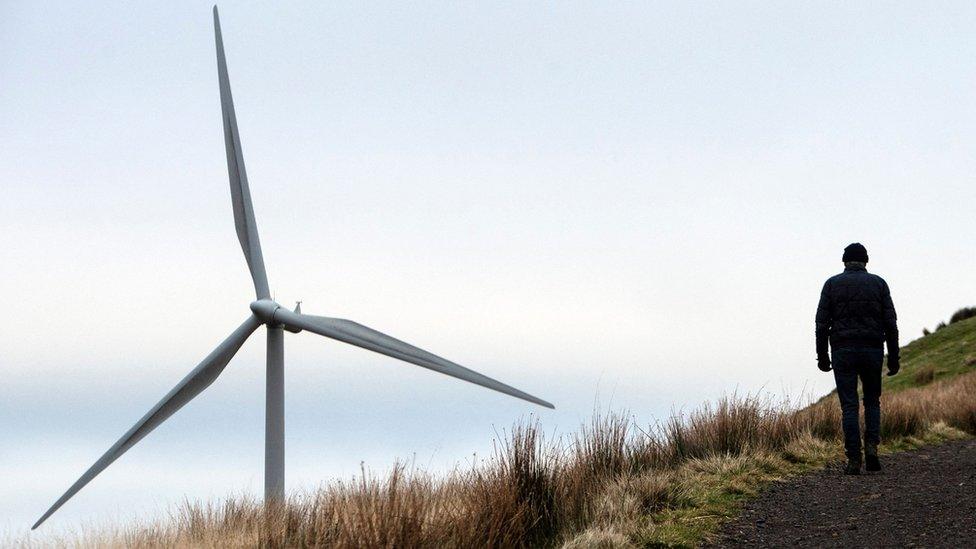Low winds blamed for fall in Scotland's renewable energy production
- Published

Milder, less windy weather has been blamed for a fall in renewable energy production in Scotland last year.
Ministers had hoped that the country would be generating the equivalent of 100% of its "gross electricity consumption" from renewables by 2020.
It reached 98.6% that year, but in 2021 the figure fell back to 83.7%
The Scottish government said that milder weather was a factor but added that many new projects were in the pipeline.
Last year about 27.2 TWh of renewable electricity came from wind, solar and hydro sources, 15% lower than the record figure achieved in 2020.
Wind turbines are the biggest source of that green energy, and last year was notably less windy on average than in previous years. There was also less rainfall, affecting hydro generation.
What does 'equivalent' consumption mean?
Figures using terms like "gross consumption" and "equivalent" targets have often been misunderstood.
Scotland produces more electricity than it uses, from a mix of renewable and non-renewable sources.
Overall it is a net exporter of electricity, last year sending 18 times more to England than it received back. A small amount is also exchanged between Scotland and Northern Ireland.
Gross consumption refers to the total electricity generated minus the amount sent to other parts of the UK.
But that does not mean all the electricity being used in Scottish homes or businesses is coming from renewable sources.
A significant proportion would still come from fossil fuels or nuclear, while some of Scotland's green electricity would be exported elsewhere.
Last year about 52% of electricity consumed in Scotland came from renewables.
The Scottish government said renewable energy generation was "of course dependent on our natural resources".
"The picture for renewable generation in Scotland in 2021 reflects generally milder weather than in previous years," a spokesman said.
The government said a significant increase in renewables capacity was in the pipeline, which would boost renewables generation much further in the coming years.
The Scottish government no longer reports against the gross consumption target, having set a new one.
It now aims to generate 50% of Scotland's total energy demand from renewables by 2030.
The new target goes beyond electricity and includes gas for heating and fuel for transport.
Provisional data using this measure shows that 25.4% of Scotland's energy came from renewables.